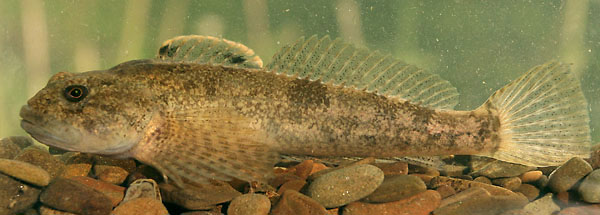| Cottidae (Sculpins) |
| 15 cm SL (male/unsexed); max. reported age: 8 years |
|
demersal; freshwater; brackish; depth range 0 - 15 m |
| Europe and Asia: Streams in Carpathians draining to Danube, Dniestr, Vistula and Odra. Baltic Sea basin, especially in northern Sweden and Finland between 64 and 68°N, central Finnish lakes area, a few streams in southern Finland and northern Poland, Lake Ladoga and southern Lake Onega basins, a few lakes in northern Germany (extirpated), Lake Hañcza in Poland and Skjernaa drainage in Denmark. In Siberia from River Ob eastward to River Lena. Absent in rivers draining to Baltic Sea south of Iijöki drainage in central Finland and in rivers draining to the White and Barents Seas. Cottus populations from the Kolyma, Amur and Korean drainages usually identified as Cottus poecilopus belong to a different species. |
|
Anal soft rays: 13-15. Differs from all other species of Cottus in Europe by possessing spatulate prickles; pelvic-fin rays tessellated, with 5-15 distinct rows of spot, appearing as transverse bands; and 2 chin pores. Additional characters useful in the identification of this species include: lateral line clearly above midline of body (shared only with C. koshewnikowi); lateral line clearly above midline of body; lateral line incomplete, usually reaching to anal-fin base; and prickling restricted to body under pectoral fin (Ref. 55856). |
| Inhabits northern, and mountain and foothill streams, and oligotrophic lakes. Found in fast-flowing waters of coastal streams, rivers, inland lakes, usually on stony bottoms (Ref. 4698). Moves downstream to estuaries and tolerates brackish waters (Ref. 4698). Feeds on algae (diatoms, desmids, blue-green algae), polychaetes, crustaceans, aquatic insect larvae and nymphs (Ephemeroptera, Trichoptera, Plecoptera, Chironomidae), fish eggs and larvae. |
|
Least Concern (LC); Date assessed: 01 January 2008 Ref. (130435)
|
| harmless |
Source and more info: www.fishbase.org. For personal, classroom, and other internal use only. Not for publication.

